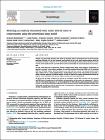| dc.contributor.author | Naci, Lorina | |
| dc.contributor.author | Kandeepan, Sivayini | |
| dc.contributor.author | Rudas, Jorge | |
| dc.contributor.author | Gomez, Francisco | |
| dc.contributor.author | Stojanoski, Bobby | |
| dc.contributor.author | Valluri, Sreeram | |
| dc.contributor.author | Owen, Adrian Mark | |
| dc.contributor.author | Nichols, Emily Sophia | |
| dc.contributor.author | Soddu, Andrea | |
| dc.date.accessioned | 2020-09-18T13:45:44Z | |
| dc.date.available | 2020-09-18T13:45:44Z | |
| dc.date.issued | 2020 | |
| dc.date.submitted | 2020 | en |
| dc.identifier.citation | Kandeepana, S., Rudasb, J., Gomez, F., Stojanoski, B., Valluria, S., Owen, A.M., Naci, L., Nichols, E.S. & Soddu, A., Modeling an auditory stimulated brain under altered states of consciousness using the generalized ising model, NeuroImage, 223, 2020 | en |
| dc.identifier.other | Y | |
| dc.identifier.uri | https://www.sciencedirect.com/science/article/pii/S1053811920308533?via%3Dihub | |
| dc.identifier.uri | http://hdl.handle.net/2262/93512 | |
| dc.description.abstract | Propofol is a short-acting medication that results in decreased levels of consciousness and is used for general anesthesia. Although it is the most commonly used anesthetic in the world, much remains unknown about the mechanisms by which it induces a loss of consciousness. Characterizing anesthesia-induced alterations to brain network activity might provide a powerful framework for understanding the neural mechanisms of unconsciousness.
The aim of this work was to model brain activity in healthy brains during various stages of consciousness, as induced by propofol, in the auditory paradigm. We used the generalized Ising model (GIM) to fit the empirical fMRI data of healthy subjects while they listened to an audio clip from a movie. The external stimulus (audio clip) is believed to be at least partially driving a synchronization process of the brain activity and provides a similar conscious experience in different subjects. In order to observe the common synchronization among the subjects, a novel technique called the inter subject correlation (ISC) was implemented.
We showed that the GIM—modified to incorporate the naturalistic external field—was able to fit the empirical task fMRI data in the awake state, in mild sedation, in deep sedation, and in recovery, at a temperature T* which is well above the critical temperature. To our knowledge this is the first study that captures human brain activity in response to real-life external stimuli at different levels of conscious awareness using mathematical modeling. This study might be helpful in future to assess the level of consciousness of patients with disorders of consciousness and help in regaining their consciousness. | en |
| dc.language.iso | en | en |
| dc.relation.ispartofseries | NeuroImage; | |
| dc.relation.ispartofseries | 223; | |
| dc.rights | Y | en |
| dc.subject | The generalized ising model | en |
| dc.subject | Naturalistic stimuli | en |
| dc.subject | Inter-subject correlation | en |
| dc.subject | Consciousness | en |
| dc.title | Modeling an auditory stimulated brain under altered states of consciousness using the generalized ising model | en |
| dc.type | Journal Article | en |
| dc.type.supercollection | scholarly_publications | en |
| dc.type.supercollection | refereed_publications | en |
| dc.identifier.peoplefinderurl | http://people.tcd.ie/nacil | |
| dc.identifier.rssinternalid | 220291 | |
| dc.rights.ecaccessrights | openAccess | |
| dc.subject.TCDTheme | Neuroscience | en |
| dc.subject.TCDTag | VISION, AUDITION, SOMATOSENSATION | en |
| dc.status.accessible | N | en |




